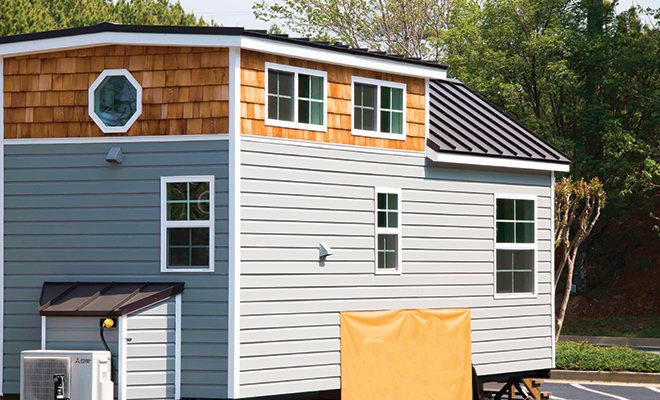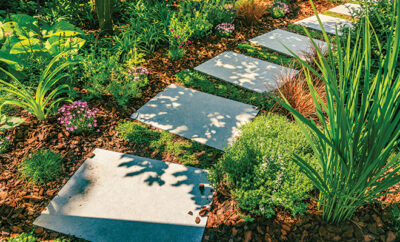
The Art of Tiny House Living
Although living small has been around for hundreds of years, the lifestyle has just recently taken hold in the U.S. The offbeat trend of living in homes that are smaller than 399 square feet has been growing in popularity since the mid 1990s.
It’s difficult to estimate how many tiny houses exist in the U.S. today; there isn’t an easy way to count them. But reports from the ever-growing tiny house communities indicate that there are thousands. As the desire to live small and own less grows, so does the public’s interest. The Tiny House Jamboree, a weekend expo launched in 2015, draws about 50,000 people every year. The popular Facebook group Tiny House People, formed by tiny house enthusiast Macy Miller, has a membership of 40,000.
What is a tiny house?
There are two types of tiny houses: tiny houses on wheels, or THOWs, and tiny houses on foundations. There is no specific definition of a tiny house, but they are generally thought of as being less than 399 square feet. Homes of 400 or more square feet are referred to as “park model homes” and they’re often found in vacation or retirement communities.
Tiny housers cross all demographics–millennials and seniors, singles and couples, empty nesters, artists, retirees and students. The one commonality is that they are all mainstream people who have jobs, pay taxes and have families; they just choose to live in a smaller space.
As homeowners catch the fever to go tiny from popular television shows such as Tiny House Hunters and Tiny House Nation, it’s important for them to remember that choosing to go tiny is a big task. Downsizing and living in less than 399 square feet is a process that involves far more than deciding to store a few things and sell a current home. Here are a few points to ponder.
Why it’s an appealing lifestyle
Tiny houses offer freedom from the 30-year mortgage and cost far less to maintain than a traditional-sized home. Living tiny encourages the nurturing of a simpler lifestyle. With a lighter financial burden, a tiny house dweller can work fewer hours and have more time to devote to activities they love, including volunteering in their community.
Are you accepting a new job in a new state? Do you want to be a snowbird? Would you like to see the U.S. yet still need to make a living? Take your house with you! By having a home that travels along, tiny house owners relish not having to sell their current house and buy another in a new location.
The first steps
Do a personal inventory, not of your possessions, but of yourself. Tiny house experts advise that small living newbies take the time to think about their “why” before making the leap. What is it about micro-living that is so appealing? Is it visual appeal? Is it the idea of mobility and freedom? Or are they running toward a tiny house while running away from something else? What would the tiny house lifestyle do for their life and circumstances?
Purge! Adjusting to a smaller space and fewer possessions is not a tiny undertaking. A large part of transitioning to living in several hundred square feet is a drastic downsizing that oftentimes is an even more drastic reality check. Experts advise that any extreme downsize happens in stages or layers and that home dwellers categorize possessions by what is essential, what is beautiful and what has a purpose.
Face the reality of change. Tiny house wannabes need to consider all aspects of their lives, from storage to employment options. Tiny housers should also be aware that many tiny houses utilize a composting toilet or grey water tanks similar to what an RV has; these are all important changes that house owners need to be comfortable with.
Do your research. Watch the tiny house documentaries and movies; find the TEDx Talks about tiny houses or peruse the many websites, books, blogs and publications such as Tiny House Magazine and Tiny House Blog published by Kent Griswold. Sign up for a workshop. There are many individuals who lead tiny house workshops and opportunities to attend are available year-around. Dig into groups such as Tiny House Collaborative or Tiny House Build for workshop calendars. Tour a tiny house and get a sense of space by being inside one and imagining your life in a smaller space. Find a local tiny house event near you and go. There are many regional events; two national ones to visit are the Tiny House Jamboree, October 2017 in Arlington, Texas, and the Tiny House Conference, April 2018 in Asheville, North Carolina.
Tiny houses are not for everyone, but they are definitely here to stay. Look for rentals that are available and try one on for size. Maybe you will be the next family or individual who discovers that tiny living has big benefits. ■
Sources: www.fourlightshouses.com, tinyhousejamboree.com, TinyHouseBuild.com, tinyhouseexpedition.com, tinyhousemagazine.co, thlab.org and tinyhouseconference.com.







